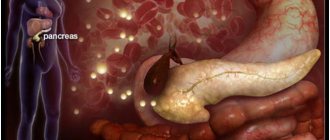Gastropanel. What it is
Gastropanel is a comprehensive blood test that helps diagnose many pathological diseases.
On the one hand, this is a common blood test, but the results that can be obtained are very effective and different from other tests. The gastropanel consists of indicators: antibodies to Helicobacter pylori, Pepsinogen I, Pepsinogen II and their ratio, basal and stimulated gastrin. But for doctors, these results can be decisive when making a diagnosis. At the same time, the patient can avoid some unpleasant studies, such as FGDS, probing, etc.
Recommendations
Gastritis and destruction of the mucous membrane increase the risk of other diseases of this organ, including stomach cancer, ulcerative manifestations, impaired absorption and others. Timely detection of pathology and Helicobacter pylori infection makes it possible to more effectively combat it and prevent the development of complications caused by it.
It happens that disturbances in the functioning of the stomach occur without pronounced symptoms, therefore a preventive annual instrumental and laboratory examination with a gastropanel is recommended for all people, regardless of gender and age.
What disease can be diagnosed using this test?
Gastroenterologists, thanks to gastropanel analysis, can assume the following:
- diagnose atrophic gastritis and Helicobacter-associated gastritis, making treatment predictions;
- assume the presence of damage to the mucous membrane, or their absence. And based on the condition of the mucous membrane, conclude what kind of gastritis the patient suffers from;
- decide on the need for gastroscopic diagnosis;
- suggest the occurrence of many serious stomach diseases, for example, Barrett's esophagus and even cancer.
In what case do you need to get tested for a gastropanel?
- If you suspect a vitamin B12 deficiency
- If you have relatives suffering from gastrointestinal cancer
- If you have a difficult to diagnose gastrointestinal disease
- If FGDS (endoscopic diagnostics) is contraindicated for you
- If you have loss of appetite, stomach discomfort or pain, heaviness or bloating
A gastroenterologist should prescribe the test for you. You should not prescribe tests for yourself. This is not always necessary.
Indicators included in the gastropanel analysis
Although this laboratory test is quite simple, its results can tell a specialist a lot, especially about the condition of the mucous membranes of the stomach.
1. An analysis that determines the presence of antibodies to Helicobacter pylori. It is done to diagnose gastritis caused by these bacteria.
Helicobacter pylori, which causes this disease of the stomach, is present in its mucosa. Infection with such bacteria most often occurs in childhood. And it becomes the leading problem that causes chronic gastritis. For some, this form can last a lifetime. These bacteria do not penetrate into the tissues, but are localized in patches on the surface of the mucosa, which can become the main cause of peptic ulcer disease. Very often, prolonged inflammation in patients leads to gastritis with acidity below normal. And in severe cases, the gastric mucosa may simply stop working, that is, atrophy. And this problem is almost impossible to cope with, even with modern medicine. Only partial restoration of the mucous membrane is possible. This type of gastritis has many complications. Such as ulcers and even malignant formations. And due to damage to the mucous membrane, vitamin B12 is poorly absorbed, which can lead to neurological problems and anemia.
2. The next indicator is the level of pepsinogen. It can be used to determine the level of proteins that are synthesized by the glands of the stomach.
When pepsinogens are exposed to hydrochloric acid, they are converted into pepsins. These are enzymes that are necessary to break down proteins. Pepsinogens are present in small amounts in the blood.
Types of pepsinogens:
- Pepsinogen I
, this hormone is produced only by the cervical mucous membranes and the dominant cells of the mucous membranes of the fundus and body of the stomach.
- Pepsinogen II
, this hormone is produced by the main cells located in all parts of the stomach, as well as in the glands of the duodenum.
The first type of pepsinogen can be used to judge the condition of the gastric mucosa. If it is already atrophied (due to Helicobacter pylori), then the number of cells that produce this enzyme decreases. And the concentration in the blood drops below 30 mg/l. If the inflammation does not lead to atrophy of the mucosa, then the level of this enzyme increases and thereby indicates gastritis of the body of the stomach.
Based on the pepsinogen II level, the condition of the mucous membranes of the entire stomach can be determined. If the level of pepsinogen II concentration increases, then they are inflamed due to gastritis. And the cause of this disease is Helicobacter. The occurrence of this pathology can be influenced by a number of factors, such as infections (viral or parasitic), certain medications and poor lifestyle. If the value of this enzyme is above 10 mg/l, this indicates that the mucous membranes are inflamed. And if the enzyme indicator does not change or increases very slightly, then this indicates an atrophic lesion.
3. The last indicator is the level of gastrin. This is a polypeptide hormone, it affects the secretion of hydrochloric acid, the maturation of the motility of the cells that make up the gastric mucosa. And the hormone gastrin-17, which is produced by some stomach cells during stimulation, is present in the blood.
Blood sampling must take place on an empty stomach; you cannot eat 12 hours before the test. If, under this condition, gastrin-17 levels are higher than normal, then this indicates a reduced acidity of the digestive juice, and this, in turn, indicates atrophic gastritis. And if the level of gastrin-17, on the contrary, is below normal, then this indicates increased acidity. And because of this, gastroesophageal reflux may develop. If this condition is left unattended, further complications may arise in the form of diseases such as ulcers and Barrett's esophagus. And then it can cause cancer.
Contraindications for analysis
The cocktail that you drink after the first blood draw includes dry products such as milk, eggs, chocolate, soy. If you are allergic to any of these products, be sure to inform your gastroenterologist so that you can replace the cocktail with one that is safe for your specific case.
At the Health Center you can take a gastropanel test and get results in the shortest possible time. Before taking the tests, make an appointment with a gastroenterologist and discuss all the nuances with him, tell him what worries you, and get professional advice with a thorough examination.
Don't put off treatment until later. Abdominal pain may be a signal of the development of a serious pathology of the gastrointestinal tract.
Preparation
For reliable results of the Gastropanel analysis, you need to properly prepare for it:
- Before 7 days, medications that affect the secretion of gastric juice must be discontinued.
- 1 day in advance, discontinue medications that neutralize the secretion of hydrochloric acid.
- Any physical and emotional stress should be excluded.
- During the day you should not drink alcohol or drink alkaline mineral water.
- Before taking the test, you must follow a simple rule regarding food intake. Dinner should be 12 hours before the test. Otherwise, the results may be incorrect. At the same time, there is another important point. After waking up, blood should be drawn within an hour.
- Smoking is not permitted before the procedure. May affect the result.
Why is a gastropanel blood test performed?
Often, all problems with the stomach and duodenum are associated with the pathogenic microorganism Helicobacter pylori. It is this bacterium that is associated with such a common disease as gastritis, since these microorganisms affect the stomach and are localized in the mucous membrane. Very often, the pathogenic bacterium Helicobacter acts as a factor in the development of chronic gastritis, and recently the number of cases of infection has increased significantly. The reason for this is the modern living conditions of people, close contacts, and eating out. There are cases where infection occurs in childhood and remains asymptomatic for many years.
Content:
- Why is a gastropanel blood test performed?
- Why is a gastropanel blood test prescribed?
- What risks does the gastropanel identify?
- Preparing and conducting analysis
Helicobacter pylori are microbes that are not able to penetrate deep into tissues, but at the same time constantly provoke inflammation of the mucous membrane and significantly increase the likelihood of developing gastric and duodenal ulcers.
Without timely treatment, the disease can become chronic and contribute to atrophy and a decrease in the functional activity of the mucous membrane. Following this, atrophic gastritis may begin, in which the acidity of the stomach decreases.
To date, therapeutic regimens for successful treatment of such infections have been approved. However, if they cause atrophy of the mucous membranes, then it is almost impossible to return them to their normal state. Let us recall that the atrophic form of gastritis often leads to the development of an oncological process, as well as to impaired absorption of certain vitamins and microelements. The disease can result in anemia and decreased functional activity of the entire body.
What will the gastropanel tell you about?
Having found out what indicators are included in the gastropanel, we can conclude that it allows you to obtain a large amount of information about the condition of the stomach:
- detects Helicobacter pylori infection;
- reveals atrophic gastritis;
- allows you to assess the condition of the gastric mucosa;
- identifies the risk of stomach cancer, as well as peptic ulcers;
- determines the possibility of developing gastroesophageal reflux disease and Barrett's esophagus;
- determines the need for further specialized research.
Who needs a gastropanel examination?
Gastropanel is usually prescribed by a gastroenterologist, but another doctor can also give a referral for the study. You can do it yourself by contacting a good laboratory. First of all, the analysis is recommended for those who experience pain and discomfort in the stomach area.
Among those who need a gastropanel examination, it is worth highlighting the group of people with an unfavorable family history - those whose relatives had stomach cancer or peptic ulcers. The analysis is also indicated for those who have been diagnosed with a lack of vitamin B12 and have pathological processes affecting the central nervous system. High levels of homocysteine and pathologies of the cardiovascular system are also reasons to undergo a gastropanel.
As a preventive measure, doctors recommend that smokers, as well as those over 45 years old, take the gastropanel once a year.
Advantages of the gastropanel for the patient
In most cases, a gastropanel is sufficient to make a diagnosis and prescribe treatment. Thus, the patient does not need to think about where gastroscopy can be done and whether it is needed at all. If such intervention is necessary, doctors prescribe gastroscopy with biopsy.
Another indisputable advantage of the gastropanel is safety and convenience. If necessary, such examination can be done every three months. This is especially true for people over 45 years of age, for whom annual endoscopic examination is recommended, and in the presence of aggravating factors - every six months.
How to properly prepare for the procedure?
- During the day before taking blood, the patient should refrain from taking alcohol, medications, physical activity, and also not change their diet.
- The night before you need to go to bed at your usual time and get up no later than an hour before the examination.
- Before the examination, refrain from smoking.
- During the week before the gastropanel, refrain from taking medications that affect gastric secretion (Zantac, Somac, Ranil, Pepcidin, etc.).
- The day before the test, do not take medications that neutralize hydrochloric acid produced by the stomach (Librax, Prepulsid, Alsucral, etc.).
If the patient has difficulty stopping medications, he should definitely inform the doctor about this. It is very important to follow these recommendations, since otherwise it will not be possible to obtain valuable research results and you will have to do a gastroscopy or re-prepare for drawing blood from a vein.
A few words about serum markers
We have a diagnostic algorithm for identifying stomach diseases, which is recommended for all patients who have pain or discomfort in the upper abdomen.
Pepsinogens
There are seven isoforms of pepsin precursors, five of which are designated as group Pepsinogen I of the main cells of the stomach body and Pepsinogen II, uniformly secreted by the glands of the entire stomach and duodenum. Pepsinogens formed in the stomach are absorbed into the blood and determination of their serum level is a generally accepted marker of atrophic gastritis “serological biopsy”.
A decrease in the level of Pepsinogen I indicates the severity of atrophic gastritis of the body of the stomach, and since the activation of Pepsinogen I into active pepsin occurs with the participation of hydrochloric acid, then the level of Pepsinogen I can roughly represent the level of stomach acidity. Pepsinogen II is produced in all parts of the stomach and in the duodenum. As the severity of atrophy increases, the ratio of serum levels of Pepsinogen I and Pepsinogen II decreases, which indicates the severity of atrophy and the spread of the process.
Gastrin
Gastrin-17, produced in the outlet section of the stomach after stimulation of cells by various factors (stomach distension, protein foods). In case of atrophy of the gastric antral mucosa, the secretion of Gastrin-17 decreases. To assess the presence and severity of the atrophic process in the stomach, it is necessary to conduct a protein stimulation test, the decrease of which shows the severity of atrophy; in the case of atrophy of the mucous membrane of the antrum of the stomach, the secretion of Gastrin-17 is proportionally reduced. In patients with severe atrophic gastritis in the antrum of the stomach, the risk of developing stomach cancer is 90 times higher than in people with normal gastric mucosa.
Homocysteine
Homocysteine is an early marker of cellular functional deficiency of B12, B6, folic acid due to the development of atrophic gastritis and other reasons - age, smoking, Helicobacter pylori infection, etc. With atrophic gastritis, the level of homocysteine increases in the blood and becomes toxic to the body. When donating blood for homocysteine, you should avoid protein foods, vitamins, and hormonal contraceptives 1 day before the test. This test can be an addition to the Gastropanel or an independent test for other diseases.
Read more about atrophic gastritis in the corresponding article.
Do not be ill!
In 2005, Australian researchers Barry Marshall and Robin Warren were awarded the Nobel Prize in Medicine for their discovery of the microorganism Helicobacter Pylori and evidence of its role in the development of gastritis and peptic ulcers.
The results of this remarkable discovery and fundamental medical research carried out in Finland led to the creation of a new diagnostic platform, GASTROPANEL .
– laboratory research to determine the condition and functional activity of the entire gastric mucosa.
The Center for Laboratory Medicine
EUROLAB offers medical professionals a modern diagnostic tool for non-invasive and non-endoscopic laboratory diagnosis of atrophic gastritis and Helicobacter Pylori
Atrophic gastritis is a chronic disease that often occurs subclinically or manifests itself with nonspecific symptoms (dyspepsia). The disease develops slowly over many years and often goes undetected and undiagnosed. The isolation of Helicobacter Pylori has changed the understanding of the causes of gastritis, cancer and gastric ulcers. It is generally accepted that in the majority (70-90%) of cases the main cause of peptic ulcer is gastritis or multifocal atrophic gastritis caused by H. Pylori.
It has been established that in patients with atrophic gastritis of the body of the stomach in 5
times the risk of developing stomach cancer compared to the rest of the population.
If the entire stomach mucosa is damaged (severe atrophic gastritis of the body and antrum), the risk increases up to 90
times.
If the atrophic process is localized only in the antrum, the risk is increased 20
times, in addition, the risk of developing peptic ulcer disease is
25
times higher than in the rest of the population.
Risk group diseases associated with atrophic gastritis also include deficiency of vitamin B12, iron, zinc, and calcium. It is also known that atrophic gastritis leads to disruption of the production of internal factor necessary for the normal absorption of vitamin B12 in the small intestine. Undiagnosed atrophic gastritis is a common cause of vitamin B12 deficiency in older people. Vitamin B12 deficiency is associated with anemia, peripheral polyneuropathy, dementia, depression, impaired homocysteine methylation and its accumulation in the blood, which is one of the important risk factors for the development of atherosclerosis, damage to the blood vessels of the heart and brain.
Timely diagnosis and treatment of atrophic gastritis helps reduce the risk of developing diseases such as stomach cancer and peptic ulcers. On the contrary, late diagnosis of atrophic gastritis can lead to the development of dementia, increased risk of polyneuropathy, myocardial ischemia and cerebral hemorrhages due to malabsorption of vitamin B12 and subsequent disturbances in the metabolism of homocysteine and methionine in tissues and cells.
The main method for identifying morphological changes in the gastric mucosa is currently gastroscopy followed by histological examination of biopsy specimens. But it should be noted that by examining several biopsy specimens with a surface of 2-3 square millimeters it is impossible to assess the condition and function of the entire gastric mucosa, which is 80,000 mm2. In addition to this, the accuracy of gastroscopy and histological examination of the biopsy specimen depends on the competence and workload of the endoscopist and morphologist.
Because this invasive procedure is often unpleasant and not always accessible to the patient, treatment is often prescribed based on history and clinical examination. In addition, the strategy of isolated detection of H. Pylori infection and only endoscopic examination does not always allow reliably diagnosing atrophic gastritis and the risks associated with it.
It is not surprising that this approach entails a large number of diagnostic errors. Therefore, all over the world there is a continuous search for highly sensitive non-invasive and minimally invasive methods for the early diagnosis of gastrointestinal pathologies.
The set of laboratory tests includes the determination of the following analytes:
- Determination of antibodies to H. Pylori.
- Determination of the concentrations of pepsinogen I, pepsinogen II and gastrin-17.
PHYSIOLOGY, PATHOPHYSIOLOGY AND CLINICAL SIGNIFICANCE OF ANALYTES
Determination of antibodies to Helicobacter Pylori Diagnostics based on the enzyme immunoassay method makes it possible to quantitatively and with high sensitivity determine the presence of antibodies to H. Pylori in the blood. Circulating antibodies are usually represented by immunoglobulins of the IgG class.
- IgG is detected starting 3-4 weeks after infection. A decrease in antibody titer during treatment indicates the effectiveness of the therapy. Although H. Pylori can be detected by culture of biopsy material taken during endoscopy, an enzyme-linked immunosorbent assay test is preferable as a non-invasive test. More than 90% of infected people have IgG antibodies to H. Pylori antigens.
- The IgA response is usually less pronounced, but always indicates the presence of active inflammation. In some cases, an infected person may only have an IgA response.
- IgM is rarely detected, and its presence may indicate early H. Pylori infection.
Pepsinogen1 ( PGI )
Pepsinogens are precursors of the proteolytic enzyme pepsin. PGI is secreted by the chief cells of the body of the stomach (unlike PGII, which is produced in all parts of the stomach and in the duodenum). The level of PGI in the blood correlates with the number of chief cells in the gastric mucosa. That is, a decrease in the concentration of PGI in the blood (less than 25 μg/l) is an indicator of atrophic changes in this area of the stomach.
Pepsinogen 2 ( PGII )
Pepsinogen II belongs to the group of aspartic proteinase proenzymes (inactive form), which are activated in the acidic environment of the stomach and become the active enzyme pepsin. PGII is secreted by the chief and neck cells of the gastric mucosa, the pyloric glands of the antrum, and the Brunner's glands of the proximal duodenum. The normal PGII concentration is approximately 6 times higher than the PGI concentration. With gastritis, the level of PGII remains unchanged or slightly decreases, and the ratio of pepsinogen I to pepsinogen II decreases. A PGI/PGII ratio of less than 2.5 indicates pronounced atrophic changes in the body of the stomach, as well as an increased risk of developing gastric cancer.
Gastrin-17 ( G -17)
Secreted exclusively by G-cells of the antrum of the stomach, its level decreases with atrophy of the mucosa in this section. To diagnose atrophic changes, it is necessary to conduct a protein load test. In 20 minutes. with atrophic changes, the level of G-17 will not increase; in a healthy person, the level of stimulated G-17 will be 2-4-5 times higher. The test is also used to differentiate patients with atrophic gastritis of the antrum from those in whom low levels of gastrin-17 are associated with high acidity (in this case, hyperchlorhydria suppresses the secretion of gastrin-17 according to the principle of negative feedback).
With an increase in the severity of atrophic gastritis in the body of the stomach, the concentrations of pepsinogen I and pepsinogen I decrease, as well as their ratio in a blood test. Accordingly, with an increase in the severity of atrophic gastritis in the antrum of the stomach, the concentration of gastrin-17 decreases. Serum levels of pepsinogens (I and II) and gastrin-17 quantitatively reflect the condition of the entire gastric mucosa, its functional activity and the severity of atrophic changes.
Indications for a complex of non-invasive laboratory diagnostics of atrophic gastritis and
Helicobacter Pylori :
- Identifying the causes of dyspepsia (heartburn, nausea, belching, discomfort in the chest, a feeling of fullness or heaviness in the stomach, flatulence)
- Suspicion of gastritis and esophagitis (Barrett's esophagus)
- Suspicion (diagnosis) of H. Pylori infection
- Early detection (confirmation) of asymptomatic atrophic gastritis
- Assessing the risk of cancer, gastric ulcers and gastroesophageal reflux disease (to select patients requiring gastroscopy followed by biopsy)
- Evaluation of the effectiveness of treatment for H. Pylori infection and atrophic gastritis
- Before prescribing drugs, proton pump inhibitors, to exclude atrophic gastritis
- Preventive examination, especially for persons over 45 years of age and smokers
- Evaluation of patients with vitamin B12 deficiency or high risk of developing it
- Examination of patients with diseases of the nervous system (depression, polyneuropathy, dementia)
- Examination of patients with cardiovascular diseases and high homocysteine levels
Standard preparation for conducting the GASTROPANEL study
- The study is carried out strictly on an empty stomach (fasting period of at least 12 hours).
- Before the study, the patient should be informed about protein stimulation - ingestion of a protein cocktail containing soy, dairy products, eggs, chocolate (protein stimulation is contraindicated in patients with a history of an allergic reaction to soy, dairy products, eggs, chocolate!).
- 1 week before the study, refrain from taking medications that affect gastric secretion (after prior consultation with your doctor!).
- 1 day before the study, refrain from taking medications that neutralize hydrochloric acid and other medications (after prior consultation with your doctor!).
- You should refrain from physical activity, drinking alcohol, or changes in diet for 24 hours before taking blood.
- On the morning of the test, refrain from smoking.
PRINCIPLES FOR INTERPRETING THE RESULTS OBTAINED
Atrophic gastritis of the body of the stomach or antrum and body of the stomach
Atrophic gastritis of the body of the stomach, or especially severe multifocal atrophic gastritis, is the only known significant factor in the development of gastric cancer (the risk of developing gastric cancer increases 90 times). The risk of developing peptic ulcer disease in patients with atrophy is almost zero. The production of intrinsic factor is reduced, leading to malabsorption of vitamin B12 and high levels of homocysteine in tissues and blood. In addition, these patients may develop calcium and iron malabsorption, which can lead to osteoporosis (hip fractures) and anemia.
In patients in this group, there is a low serum level of PGI and a high level of G-17, if there are no atrophic changes in the antral mucosa. A decrease in serum levels of both PGI and G-17 is observed with the development of atrophic changes in the mucosa of all parts of the stomach (in the antrum and body of the stomach, that is, with severe multifocal atrophic gastritis). Approximately 70% of patients have antibodies to H. pylori
, which indicates the presence of an infectious process, even if a breath test or determination of antigen in stool gave a negative result, and even if the result of histological examination and determination of urease activity is negative. Gastric cancer or early precancerous changes (dysplasia, early gastric cancer) can be detected in 5% of cases.
Atrophic gastritis or active chronic non-atrophic gastritis of the antrum
In the presence of severe atrophic changes in the antrum, patients have an increased risk of developing peptic ulcers or gastric cancer. Typically, these patients have normal or increased acid output (basal acid output (BAO) and maximum acid output (MAO) values are normal or increased) and, accordingly, they are at risk for developing peptic ulcers. According to GASTROPANEL, the PGI level is normal, but G-17 is low. There is loss (atrophy) of G cells together with atrophy of the antral glands, associated with normal or high acid output in the absence of atrophic changes in the body of the stomach. In this case, patients always have antibodies to H. Pylori in their blood .
Non-atrophic gastritis
There is a low risk of developing stomach cancer. According to GASTROPANEL, the patient has normal serum levels of PGI and G-17, but there are antibodies to H. Pylori; eradication therapy for H. Pylori infection in these patients will prevent further development of atrophic gastritis and gastric cancer.
Healthy gastric mucosa
The risk of developing stomach cancer and peptic ulcers is minimal (except when the formation of ulcers is associated with taking NSAIDs). The GASTROPANEL indicators in these patients are normal. If a patient's gastric lining is normal, but there is a very low level of G-17 (an indicator of high acidity), the risk of damage to the esophageal lining in patients with gastroesophageal reflux disease increases.
| Parameter | Norm | Pathology |
| Pepsinogen-1 | 40 – 130 mg/l | < 25 mg/l – severe atrophy of the gastric mucosa 25 – 40 mg/l – atrophy of the gastric mucosa > 130 mg/l – high acidity, Barrett’s esophagus, high risk of developing duodenal ulcers |
| Gastrin-17 stimulated | 6 – 45 pmol/l | <5 pmol/l - atrophic gastritis of the antrum of the stomach |
| Antibodies to H. Pylori IgG | < 30 units | >=30 Units – positive |
Examples of diagnoses
1 option
Atrophic gastritis of the antrum and body of the stomach. Increased risk of stomach cancer (risk factor 90 X). Peptic ulcer (duodenal or gastric) is unlikely. H. Pylori infection.
Option 2
Atrophic gastritis of the antrum and body of the stomach, caused by H. Pylori infection (multifocal atrophic gastritis). Stomach - hypochlorhydria or achlorhydria. Gastroscopy is strongly recommended. Determination of serum levels of vitamin B12 and homocysteine is indicated. Vitamin B12 replacement therapy is necessary if vitamin B12 levels are below 170 pmol/L. The risk of later development of pernicious anemia (due to low vitamin B12 levels) should be considered, even if the current serum vitamin B12 level is 170 pmol/L or higher. H. Pylori eradication is strongly recommended if successful therapy has not been previously given.
What does this study give to the practicing physician?
GASTROPANEL is intended for the safe, ethical and cost-effective diagnosis and screening of dyspepsia, HP infection and atrophic gastritis, as well as related diseases at risk. Risk group diseases include stomach cancer, peptic ulcers, vitamin B12, iron and calcium deficiency. "GASTROPANEL" is also intended to identify the risk of complications from gastroesophageal reflux disease (GERD), in particular such serious complications as erosive esophagitis, Barrett's esophagus, which can lead to esophageal cancer.
Important!
Despite eradication therapy, atrophic gastritis can progress through intestinal metaplasia to gastric cancer if left untreated. That is why, the practice of using only diagnosis and treatment of H. Pylori infection (“diagnosis and treatment” strategy) without diagnosing atrophic gastritis and associated risks today no longer meets the interests of the patient and the doctor.
Conclusion
- " GASTROPANEL
" is a serious addition to instrumental and histological methods for examining the stomach. - " GASTROPANEL
" ensures the development of screening methods for patients at risk of peptic ulcers, stomach cancer and gastroesophageal reflux disease. - " GASTROPANEL
" provides safe and ethically sound diagnostics based on the principles of evidence-based medicine. - Diagnosis and treatment of H. Pylori infection only without diagnosing atrophic gastritis and its associated risks is currently no longer in the interests of the patient and the doctor.
Compiled based on materials from the website www.gastropanel.ru
Gastropanel - advantages
Thus, Gastropanel allows you to answer the following questions:
- does the patient have atrophic gastritis, in which part of the stomach are the changes localized,
- assess the risk of developing stomach cancer and peptic ulcers,
- does the patient suffer from gastritis caused by Helicobacter pylori,
- identify autoimmune gastritis or atrophic gastritis with damage to the body of the stomach, which may determine the risk of developing vitamin B12 deficiency, which can be associated with many diseases (atherosclerosis, vascular damage to the brain and heart, depression, polyneuropathy, dementia, etc.)
What advantages of Gastropanel can be noted: it is a simple non-invasive serological test, high sensitivity, specificity, safety and convenience for the patient, quick results, and meets the principles of evidence-based medicine.
Indications for use
- Screening diagnostics of gastric lesions: atrophy, gastritis, peptic ulcer, achlorhydria, hypochlorhydria.
- Patients with anemia.
- Patients with hypovitaminosis, calcium deficiency.
- Screening test to detect Helicobacter Pylori infection.
- Patients suffering from any dyspeptic symptoms: nausea, belching, heaviness after eating, epigastric pain, heaviness after eating, bad breath.
- As part of an annual survey of all population groups.
References
- Milchakov, D.E., Guseva, Yu.S., Abdullaeva, S.G. Clinical and morphological assessment of atrophic gastritis in adults and children. Avicenna, 2022. - No. 65. — P.14-16.
- Bulatov, V.P., Kamalova, A.A., Udachina, E.I. etc. Diagnostic value of the “GastroPanel” system in children with gastroduodenal pathology. Russian Bulletin of Perinatology and Pediatrics, 2008. - No. 4. — P.48-51.
- Paloheimo, L., Tiusanen, T., Suovaniemi, O. et al. Serological Biomarker Test (GastroPanel®) in the Diagnosis of Functional Gastric Disorders, Helicobacter pylori and Atrophic Gastritis in Patients Examined for Dyspeptic Symptoms. Anticancer Research, 2021. - Vol. 41(2). — P. 811-819.








